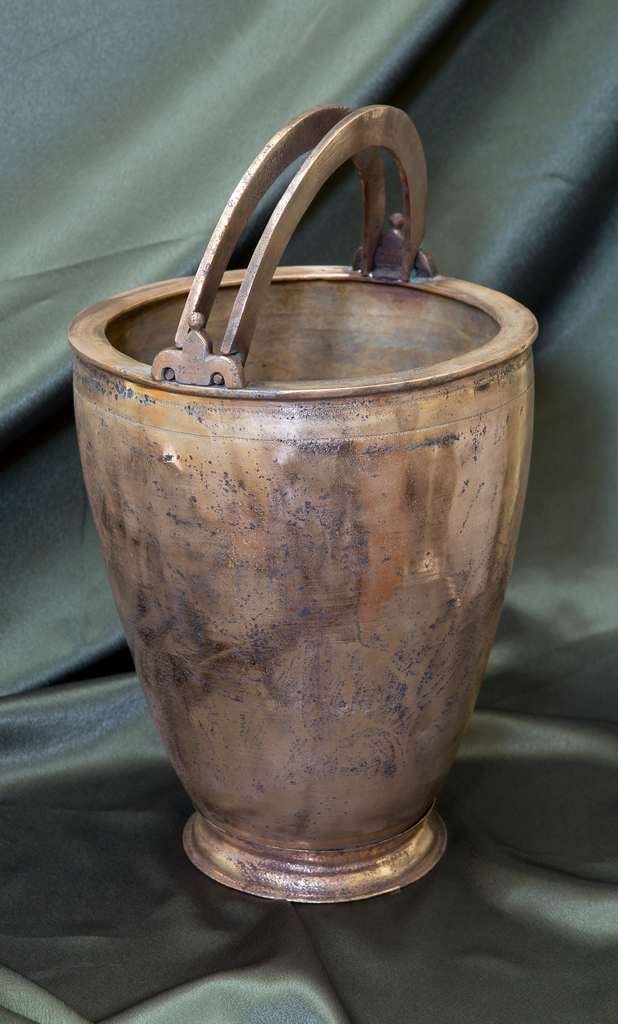The number of exhibits in the Museum collections is permanently growing through donations, acquisitions, field research and transfers. Thus, in 2009 the collections were enriched with 1,538 objects of historical and artistic significance, including 1,042 archaeological objects, 92 numismatic pieces, 29 photographs, 24 documents, 4 objects of weapon and military equipment, 95 ethnographic and household items, 13 objects of technical equipment, 29 objects of decorative art, 5 paintings, 70 philatelic objects, and 135 objects classified to “miscellanea”.
Among the most valuable items entered the collections, we can mention:
- Roman coins, 2nd century;
- dirhams, Golden Horde, 14th century;
- Gospel, Bucharest, 1750;
- ecclesiastic vestments, Bessarabia, early 19th century;
- measure units, Russia, 1857;
- photographs and household items from the painter Nicolae Coleadici’s family;
- documents and photographs that belonged to the member of the Country Council Ion Pantaru’s family;
- clothing that belonged to the composer Zlata Tcaci.
In the period 2012-2013 the heritage of the National Museum of History of Moldova was enriched with 9389 pieces, including 4087 in the main collection. The objects entered the museum collections through donations (2442), acquisitions (157) and transfer from the former Museum of Archaeology of ASM (6214) and State Treasury of Republic of Moldova (576).
The main museum heritage collection was increased with 5087 objects, including: 2538 archaeological items, 536 numismatic objects, 88 ethnographic and usual objects, 9 technical objects, 79 photographs, 93 documents, 108 paintings, 208 pieces of decorative art, 120 philately objects, 2 furniture objects and 296 marked with „other".
Among most valuable objects which enriched the heritage of the Museum in the years 2012 - 2013 are:
- Little amphora, burned clay, 2
nd century BC;
- Amphora, end of 6
th - beginning of 5
th century AD;
- Roman coins from the treasury of Goleni, Cantemir raion, 3
rd-4
th centuries AD;
- Medieval coins discovered at Costești, Ialoveni raion, 14
th-15
th centuries;
- Treasury from the Late Bronze period, Noua-Coslogeni culture (14
th-12
th centuries BC);
- Collection of copper coins, Golden Hoard, Costești, 14
th century;
- Brass vessels, 14
th-17
th centuries;
- Decorative fragments for clothing discovered at the archaeological excavations from Căpriana Monastery;
- Chimney clocks, office lamp, Western Europe, 19
th century;
- Porcelain statuettes, Western Europe, 19
th century;
- Book
Город Кишинев времен жизни в нем А.С. Пушкина(1820-1823), Ioan Halippa, Chișinău, 1899;
- Romanian-Russian dictionary by Nicolae Popovschi, Chișinău, 1922;
- Ladies hats, 40ies and 50ies of 20
th century;
- Collection of „Basarabia" newspapers, September 28
th, 1941 - October 20
th, 1941;
- Photos and letters from the front which belonged to Grigore Crivonosov from v. Macovei, 1944;
- Collection of photos about the deportations from Bessarabia in the summer of 1949;
- Collection of decorative bells, 1978-2011;
- Collection of objects, books, sketches and paintings signed by painter E. Childescu.
Between 2014 and 2015 the museum heritage has increased by 6 578 pieces, including 2 530 in the main collection. They entered the museum through donations, purchases, transfer from the former Museum of Archaeology of ASM and the State Treasury of the Republic of Moldova.
In the main collection of museum heritage were included new and valuable archaeological objects (1401), numismatic pieces (243), photos (103), documents (57), decorative art objects (103), clothing and accessories (29), technical objects (27), weapons (15), furniture objects (29) etc. Among the most valuable cultural assets that have enriched the museum collections are to be mentioned:
- Documents written in Romanian language, published in Bessarabia in the years 1815-1828;
- Kettle with burner, teapot and sugar bowl, England, 19th century;
- Sewing machine „Phoenix", Germany, beginning of 20th century;
- Documents, photos, and personal objects reflecting the life and activity of film director and screen writer Valeriu Gagiu;
- Materials about the activity of the National Olympic Committee of the Republic of Moldova.















































